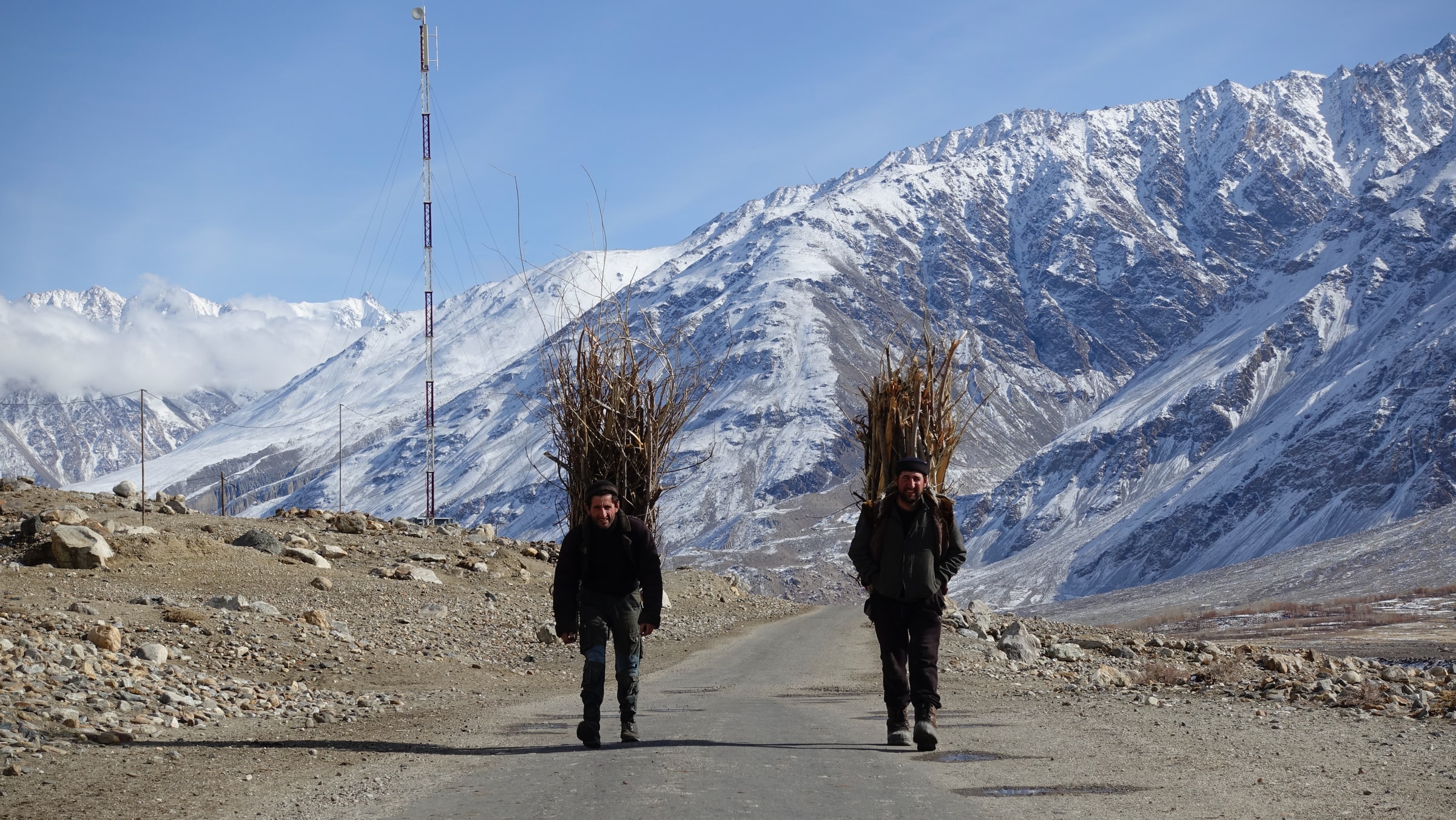The sudden fall of Kabul to the Taliban has exacerbated high levels of food insecurity within Afghanistan and added new challenges to US foreign policy, sanctions strategy, and humanitarian relief capabilities. The international community has responded through several humanitarian channels, such as UN donors pledging more than $1 billion USD for emergency assistance in September and the US providing nearly $144 million in additional humanitarian assistance to Afghanistan last month, totaling $474 million in US aid alone to the country. Yet, as winter settles into the region, many are fearful that these efforts will not be enough.
The impact of US and UN sanctions on the distribution of funds and necessary resources for food, medicine, bank transactions, and other relief aid to Afghanistan raises significant humanitarian concerns. In particular, more than half of the Afghan population — approximately 22.8 million people — are projected to face acute food insecurity during a harsh winter season due to prolonged drought, conflict, and economic collapse.
Although sanctions are a useful tool to incorporate within US foreign economic strategy, the Biden administration should ensure that all necessary precautions to mitigate unintended economic and humanitarian impacts on the Afghan people are taken. The best way to ensure that is to use the strategies recommended by the US Department of Treasury in its 2021 Sanctions Review that outlines how the US can modernize its sanctions’ policies in five ways: Linking sanctions to a clear policy objective; incorporating multilateral coordination; tailoring sanctions to reduce unintended political, economic, and humanitarian impacts; making the implementation of sanctions adaptable and easy; and updating the Treasury’s sanctions technology, infrastructure, and workforce.
The case of Afghanistan, however, indicates that sanctions related to the Taliban are complicated — and a looming food and humanitarian crisis may not speed up any major changes that are needed in the current sanctions regime.
BREAKING DOWN US SANCTIONS ON AFGHANISTAN
Starting in 1999 and heavily intensifying after the Sept. 11 terrorist attacks, Washington has imposed a wide array of economic measures, including sanctions, on Taliban-related targets for over two decades. Instead of creating a country-specific sanctions program on Afghanistan, the US government has relied on other economic measures like asset freezes and existing thematic sanctions programs addressing counterterrorism financing, counternarcotics trafficking, and in some cases, Iran-related authorities, to respond to illicit Taliban activity. Out of the approximately 155 US sanctions related to Afghanistan, almost half target Taliban affiliates and 70% of total designations are pursuant to counterterrorism sanctions programs.
Current US sanctions strategy for the Taliban, however, faces greater challenges as its leaders now possess major political and economic roles in Afghanistan. For example, the lack of a formal definition of which individuals and entities are considered part of “the Taliban” is an overarching challenge in crafting an effective US sanctions strategy in the region. Policy options have publicly tackled this issue but it continues to complicate sanctions compliance and enforcement efforts for US and foreign financial institutions, governments, humanitarian aid organizations, and the private sector due to fear of inadvertently violating US sanctions through facilitating, or engaging in, Afghanistan-related financial activity.
Today, there are ongoing debates on what degree of affiliation or connection to the Taliban is required for sanctions designations to be permissible. For example, is the definition of the “Taliban” solely limited to entities and persons already sanctioned? Should the US government expand the definition to allow the Treasury to target any individual and/or entity related to the Afghan government, which the Taliban now controls? Or, should sanctions target both the government and jurisdiction of Afghanistan itself? If so, then this would be the most restrictive definition to date regarding Taliban-related targets — and the targeting mechanisms would be similar to current comprehensive, country-specific sanctions programs on Cuba, Iran, and North Korea.
CHALLENGES FOR HUMANITARIAN EFFORTS
Since the Taliban now controls 3 out of the 12 national banks of Afghanistan — Pashtany Bank, Bank-e-Mellie Afghan, and New Kabul Bank — there are immediate concerns among financial stakeholders whether to consider Da Afghanistan Bank, the country’s central bank that holds bank accounts in the US, as a Taliban-controlled entity or not. While perhaps the need to define the Taliban was less urgent when the group operated as a shadow government within Afghanistan, it now raises difficult political and compliance issues that can — and do— impede the flow, distribution, and acceptance of financial transactions to fund humanitarian relief efforts.
Sanctions related to the Taliban are complicated — and a looming food and humanitarian crisis may not speed up any major changes that are needed in the current US sanctions regime.
These challenges also impact the capabilities of non-US entities to engage with Afghanistan. After Kabul fell to the Taliban, NATO announced that it has suspended all financial support to the Afghan government because “there is no Afghan government for NATO to support,” signaling no intent to provide or facilitate financial transactions that could pass through a Taliban-controlled nexus. NATO played a helpful role in successfully evacuating personnel from allied and partner countries inside Afghanistan, as well as “at-risk” NATO-affiliated Afghans, but it currently has yet to signal any intent to engage a Taliban-run Afghanistan. In comparison, the EU pledged in October 2021 to provide $1 billion euros, roughly $1.15 billion USD, in aid to Afghanistan and neighboring countries to stymie a major humanitarian and socio-economic collapse, which could spillover across the region as seen in the case of Syria.
The US government has taken several steps to clarify sanctions protocol and guidelines in an attempt to ease the flow of humanitarian aid into Afghanistan. In particular, the Treasury has issued a nonpublic specific license and public general licenses to address overcompliance issues from banks and the private sector. While US sanctions will prohibit most financial transactions involving the Taliban (and Haqqani Network), these general licenses will allow transactions for “the purpose of effecting the payment of taxes, fees, or import duties to, or the purchase of receipt of permits, licenses, or public utility services.” The Treasury’s Office of Foreign Assets Control later published an associated FAQ to clarify permissible financial activity, and the US government confirmed to major financial institutions and services, such as Western Union and MoneyGram, that resuming operations to facilitate remittances to Afghanistan is consistent with US policy.
Although issuing guidance on new or extended humanitarian aid exemptions for US sanctions is helpful to address overcompliance issues and reaffirms the Treasury’s intent to mitigate unintended impacts on civilian populations, the UN’s Integrated Food Security Phase Classification report found that 45% of the Afghan population are already facing “high levels of food insecurity” which will expectedly rise to 55% from November 2021 to March 2022. Unless properly targeted and calibrated alongside international partners and allies, economic sanctions on Afghanistan could exacerbate this pending humanitarian crisis.
IS CURRENT US AID ENOUGH?
The Biden administration will likely continue to incorporate relevant sanctions programs within its foreign policy toward Taliban-controlled Afghanistan while issuing humanitarian aid carve-outs for relief efforts. Following the US decision to provide an additional $144 million in humanitarian assistance to Afghanistan last month, National Security Council spokesperson Emily Horne gave an official statement highlighting that US partners will provide lifesaving protection, shelter, winterization assistance, emergency food aid, water, and other essential health care services in response to the growing humanitarian crisis.
To date, the Treasury has shown true intent to incorporate humanitarian considerations within its overall sanctions policy, but it remains unclear whether these actions will be enough to stall or mitigate the growing humanitarian crisis in Afghanistan under the dysfunctional rule of the Taliban.
Jason Bartlett is a Research Assistant for the Energy, Economics, and Security Program at the Center for a New American Security (CNAS) and leads research and writing for the program’s Sanctions by the Numbers series. For more analysis on Afghanistan-related US sanctions, please see Sanctions by the Numbers: Spotlight on Afghanistan.














